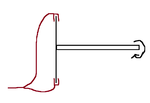kripacharya
Banned

Hi so my goal is to make a rotary capacitor, the purpose is rather complicated ...
I doubt your 'purpose' could be any more complicated than this thread itself. It would be useful to have some insight into what you're actually trying to achieve.


